Drew Kientzy, Ryan Milhollin, Charles Ellis, and Ray Massey – University of Missouri
August 18, 2023
Source link here.
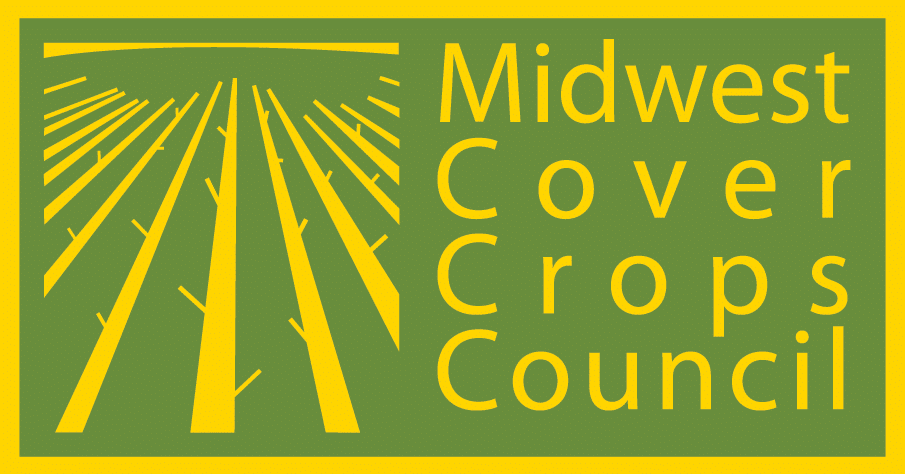
Drew Kientzy, Ryan Milhollin, Charles Ellis, and Ray Massey – University of Missouri
August 18, 2023
Source link here.
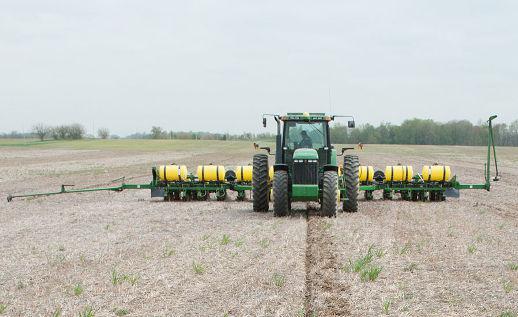

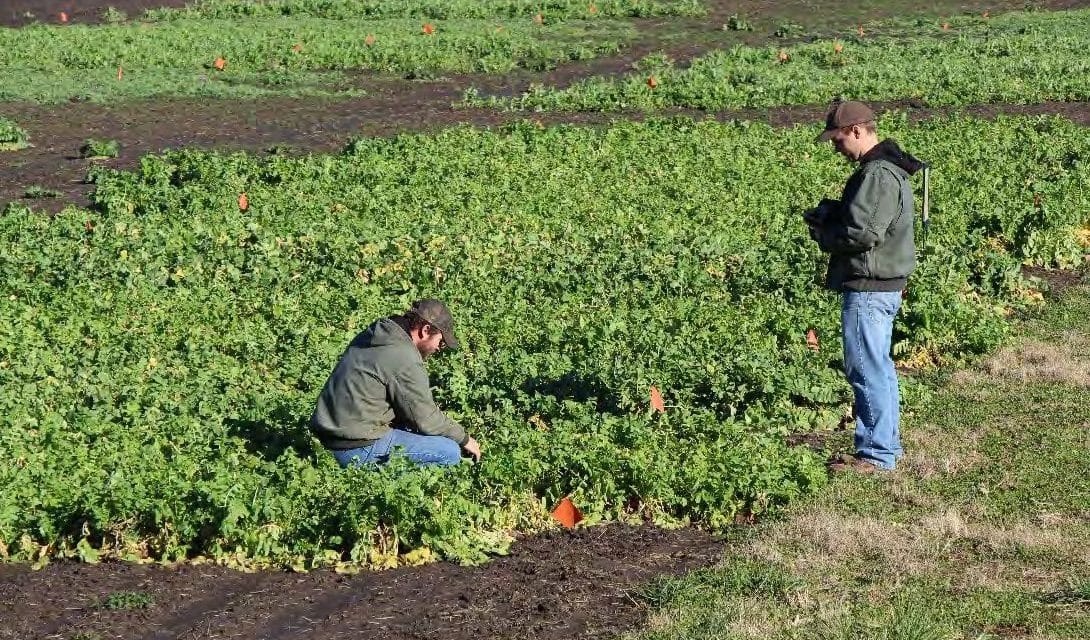

Charles Ellis – University of Missouri Extension
February 2021

Eric Lee-Mader, Anne Stine, Jarrod Fowler, Jennifer Hopwood and Mace Vaughanby – Xerces Society for Invertebrate Conservation with contributions from the USDA Natural Resources Conservation Service
August 2017
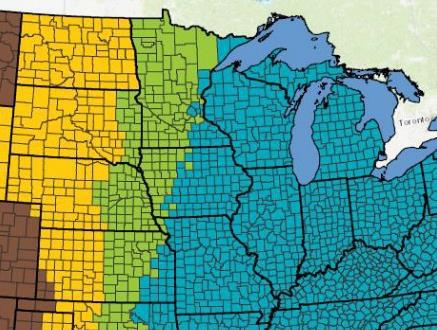
Collaboration of MCCC Board of Directors
May 2020
Cover Crop Termination Guidelines for Unfavorable Spring Weather Conditions
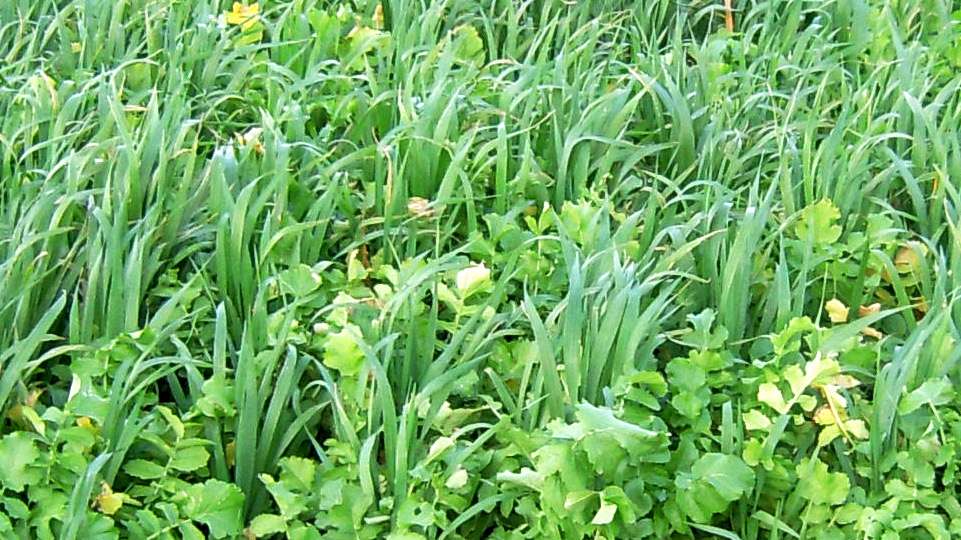
Midwest Cover Crops Council (MCCC-113)
University of Missouri Extension (MX82)
This publication is intended to provide a starting point for farmers who are new to growing cover crops. With experience, farmers may fine-tune the use of cover crops for their systems.
The following recipe provides an introductory approach to integrating a cover crop into a soybean-corn rotation. Often the easiest place to begin is to plant a cover crop ahead of a soybean cash crop following corn, so consider starting with the companion recipe titled Post Corn, Going to Soybean (publication MCCC-112/MX81; see Resources). Planting cereal rye before corn is discouraged for beginning cover crop users. Experienced cover crop growers can plant it successfully, but it requires changes to nitrogen management and other adjustments.
This publication focuses on cover crops with higher success rates preceding corn, namely (1) a two-way mix of oats and radish for a combination that winterkills and, thus, does not require spring termination or (2) a two-way mix of oats and crimson clover for more erosion control plus living roots through spring. Note that crimson clover terminated in early to mid-April will contribute only minor nitrogen fixation due to limited growth. It needs to grow into about the second week of May before nitrogen contribution from the clover starts to become more substantial. But even a little N fixation is helpful because the clover normally overwinters and it can continue to provide living roots to feed the soil biology while providing a modest level of erosion prevention in combination with the oat residue.
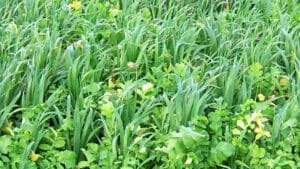
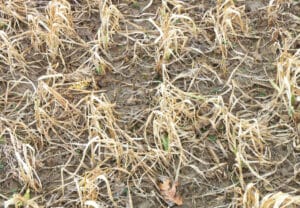
Post Corn, Going to Soybean: Use Cereal Rye (Missouri Cover Crops Recipe Series, MCCC-112/MX81)—available from the Midwest Cover Crops Council
Cover Crop Selector Tool —available from the Midwest Cover Crops Council
Cover Crops in Missouri: Putting Them to Work on Your Farm (University of Missouri Extension Guide G4161)
Evaluation of Herbicide Programs for the Termination of Cover Crop Species in the Spring, Division of Plant Sciences, University of Missouri
The Effects of Herbicide Carryover on Cover Crops, Division of Plant Sciences, University of Missouri
Charles Ellis and Rob Myers, University of Missouri(Note: This publication was adapted with consent from MCCC under a joint project to produce customized introductory guidance about cover crops for all member states/provinces.)
Kerry Clark, University of Missouri; Eileen Kladivko, Purdue University; Greg Luce, University of Missouri; Anna Morrow, Midwest Cover Crops Council; and Tim Reinbott, University of Missouri
August 2019
The U.S. Department of Agriculture (USDA) prohibits discrimination in all its programs and activities on the basis of race, color, national origin, age, disability, and where applicable, sex, marital status, familial status, parental status, religion, sexual orientation, genetic information, political beliefs, reprisal, or because all or a part of an individual’s income is derived from any public assistance program. (Not all prohibited bases apply to all programs.) Persons with disabilities who require alternative means for communication of program information (Braille, large print, audiotape, etc.) should contact USDA’s TARGET Center at (202) 720-2600 (voice and TDD). To file a complaint of discrimination write to USDA, Director, Office of Civil Rights, 1400 Independence Avenue, S.W., Washington, D.C. 20250-9410 or call (800) 795-3272 (voice) or (202) 720-6382 (TDD). USDA is an equal opportunity provider and employer. ©2019 by MCCC. All rights reserved.
Midwest Cover Crops Council (MCCC-112)
University of Missouri Extension (MX81)
This publication is intended to provide a starting point for farmers who are new to growing cover crops. With experience, farmers may fine-tune the use of cover crops for their systems.
The following recipe provides an introductory approach to integrating a cover crop into a corn-soybean rotation. Planting a cover crop ahead of a soybean cash crop is often the easiest way to introduce cover crops into your rotation. Cereal rye has been proven to be a successful choice prior to soybean because typical fall conditions in Missouri allow for a September corn harvest, providing a suitable planting window for cereal rye.
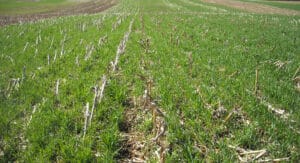
Cover Crop Selector Tool — available from the Midwest Cover Crops Council
Cover Crops in Missouri: Putting Them to Work on Your Farm (University of Missouri Extension Guide G4161)
Evaluation of Herbicide Programs for the Termination of Cover Crop Species in the Spring, Division of Plant Sciences, University of Missouri
The Effects of Herbicide Carryover on Cover Crops, Division of Plant Sciences, University of Missouri
Charles Ellis and Rob Myers, University of Missouri (Note: This publication was adapted with consent from MCCC under a joint project to produce customized introductory guidance about cover crops for all member states/provinces.)
Kerry Clark, University of Missouri; Eileen Kladivko, Purdue University; Greg Luce, University of Missouri; and Anna Morrow, Midwest Cover Crops Council; and Tim Reinbott, University of Missouri
August 2019
The U.S. Department of Agriculture (USDA) prohibits discrimination in all its programs and activities on the basis of race, color, national origin, age, disability, and where applicable, sex, marital status, familial status, parental status, religion, sexual orientation, genetic information, political beliefs, reprisal, or because all or a part of an individual’s income is derived from any public assistance program. (Not all prohibited bases apply to all programs.) Persons with disabilities who require alternative means for communication of program information (Braille, large print, audiotape, etc.) should contact USDA’s TARGET Center at (202) 720-2600 (voice and TDD). To file a complaint of discrimination write to USDA, Director, Office of Civil Rights, 1400 Independence Avenue, S.W., Washington, D.C. 20250-9410 or call (800) 795-3272 (voice) or (202) 720-6382 (TDD). USDA is an equal opportunity provider and employer. ©2019 by MCCC. All rights reserved.

Collaboration of MCCC Board of Directors
June 2019
PDF of this Bulletin – Cover Crop Considerations for Prevented Planting